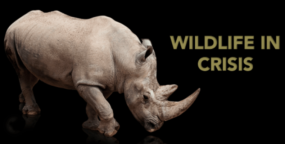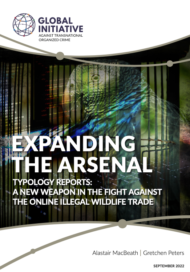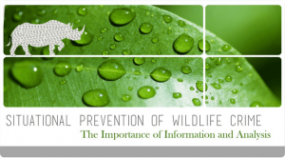Posted on 14 Mar 2022
Amid growing concern over the human damage inflicted on our ecosystems, the role of organized crime as an enabler of the illegal trade in wildlife species has attracted increased interest. Targeted policy interventions need to respond to the evolving dynamics of this market.
Despite intensified responses to curb the illicit trade in wildlife species, black markets for fauna and flora – including high-value commodities, such as timber and fish – continue to thrive, inflicting serious damage on the planet’s ecosystems and threatening the livelihoods of people who depend on them.
Public- and private-sector policy responses have increased efforts towards remedial actions, enforcement operations, business deterrents and consumer-demand mitigation. But what can we learn from the 2021 Global Organized Crime Index about the efficiency of these responses and potential solutions to this challenge?
A comparison of the Index’s national assessments of the influence of criminal actors and the existence of criminal markets for fauna and flora does not show a clear relationship between these variables. Nor does there seem to be a correlation between prevalence of these markets and the scores for the different indicators of resilience included in the Index. This is not surprising, as the illicit wildlife market involves a vast range of species and commodities, with complicated patterns of sourcing, trade and consumption found around the world.
The degree of prevalence of the illegal wildlife trade in a given country may be linked to a combination of the value of its natural resource base, the cultural preferences and emerging tastes of its consumers, and the presence of organized criminal networks. The absence of high levels of the trade may reflect depletion of natural resources, lack of consumer interest or good governance and resilience to criminal markets.
To gain a clearer picture, it is important to establish a more precise scale for analysis – for example, focusing on a commodity for which basic aspects of the illicit trade chain – such as source areas, transit points and dominant consumer markets – are known. It is then possible to assess the wider range of variables that might be influencing the prevalence of that specific trade to understand how organized crime, and resilience to it, are influencing factors.
An example of such an approach can be found in the analysis of the illegal trade in elephant ivory carried out by non-governmental organization TRAFFIC through the Elephant Trade Information System. Based on seizure data of elephant products, the project provides insights into flows and trends in the illegal ivory trade, which can be complemented with information about elephant populations and poaching, and levels of consumer-market activity. Comparison with the Organized Crime Index’s assessments of criminal actors and aspects of governance and resilience can provide additional insights, such as why certain trade routes persist and whether interventions are having an impact.
Targeted action
For the past 50 years, since the 1973 adoption of the Convention on International Trade in Endangered Species of Wild Fauna and Flora, the main policy response to over-exploitation of wildlife has been to introduce and enforce measures to regulate access to and commerce in species of concern. Where trade flows operating within these regulatory frameworks have continued to cause concern or been undercut by illegal interests, the typical reaction has been adoption of even more restrictive legislation or prohibition.
Although such tactics have been successful to an extent, they have struggled to keep pace with changes in market dynamics in an increasingly globalized world. Access to wild species has grown as a result of many factors: enhanced communications and transport channels; regulatory controls within trade systems designed to reduce barriers on the movement of people, money and freight (including less thorough inspections of cargo); and new waves of consumer demand, which have risen as emerging economies develop.
These circumstances have been exploited by organized criminals engaged in the illegal wildlife trade, for whom well-intended but often poorly enforced laws and regulations create a landscape of opportunity for profit with limited risk. These include loosely implemented trade prohibitions that create black-market opportunities for criminals, and systems such as access controls and quotas for legal trade that apply in one country but have no legal bearing in another. As shown in the 2021 Index analysis, high levels of criminality are present in countries where more than three-quarters of the world’s population live and where resilience to organized crime is relatively low (with a few notable exceptions).
Although there are no simple solutions to the challenge of this illicit economy, there are grounds for optimism. Increased efforts to protect wildlife at source and undermine demand for key commodities by applying social and behaviour-change techniques have potential to reduce opportunities for engaging in the illicit wildlife trade. Service providers, such as transport companies, banks and online markets, are ramping up action to limit the activities of criminals involved in the trade. Transnational law enforcement efforts to counter the trade are becoming more solid, with increasing use of intelligence-based approaches, modern detection tools in physical and virtual markets, and greater focus on financial crime in investigations.
It is necessary to continue to build on these efforts, but we must also understand why organized criminal networks are attracted to illicit wildlife markets and consider whether alternatives to tackle the problem, such as managed trade rather than prohibitions, might be more efficient in some contexts. Markets, including those for timber, fish and wild-plant ingredients used in food, medicine and cosmetics, can provide resources for people and incentives for local communities to become change agents and thereby benefit from conservation efforts. Regulatory approaches need careful consideration so that they do not in effect hand a big slice of these benefits to organized crime. Enforcement needs to be more incisive, while efforts to protect wildlife at source, restrict business access for illegal traders and undermine demand will continue to be critically important.
This analysis is part of the GI-TOC’s series of articles delving into the results of the Global Organized Crime Index 2021. The series explores the Index’s findings and their effects on policymaking, anti-organized crime measures and analyses from a thematic or regional perspective.



